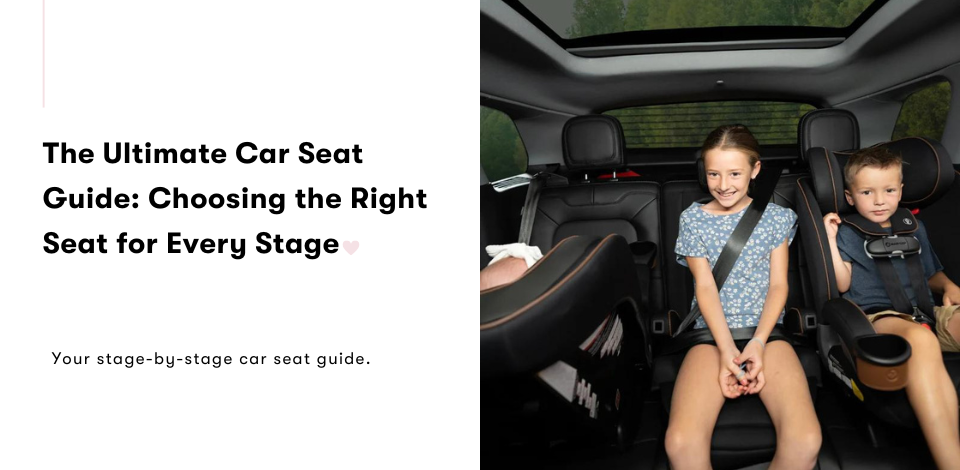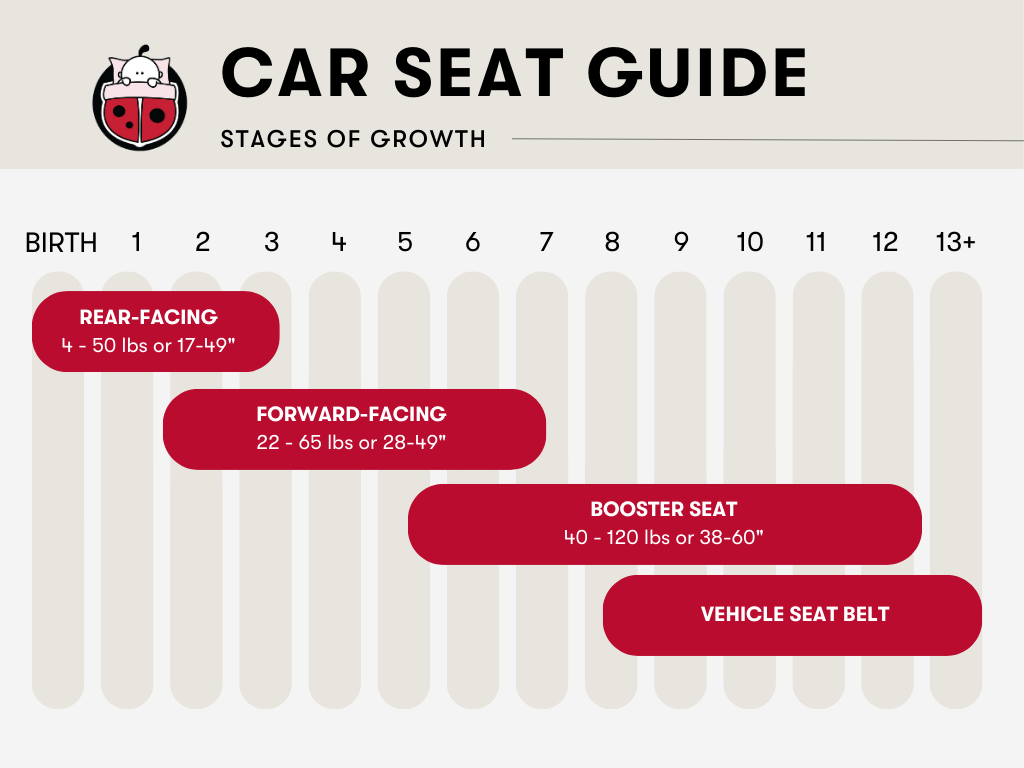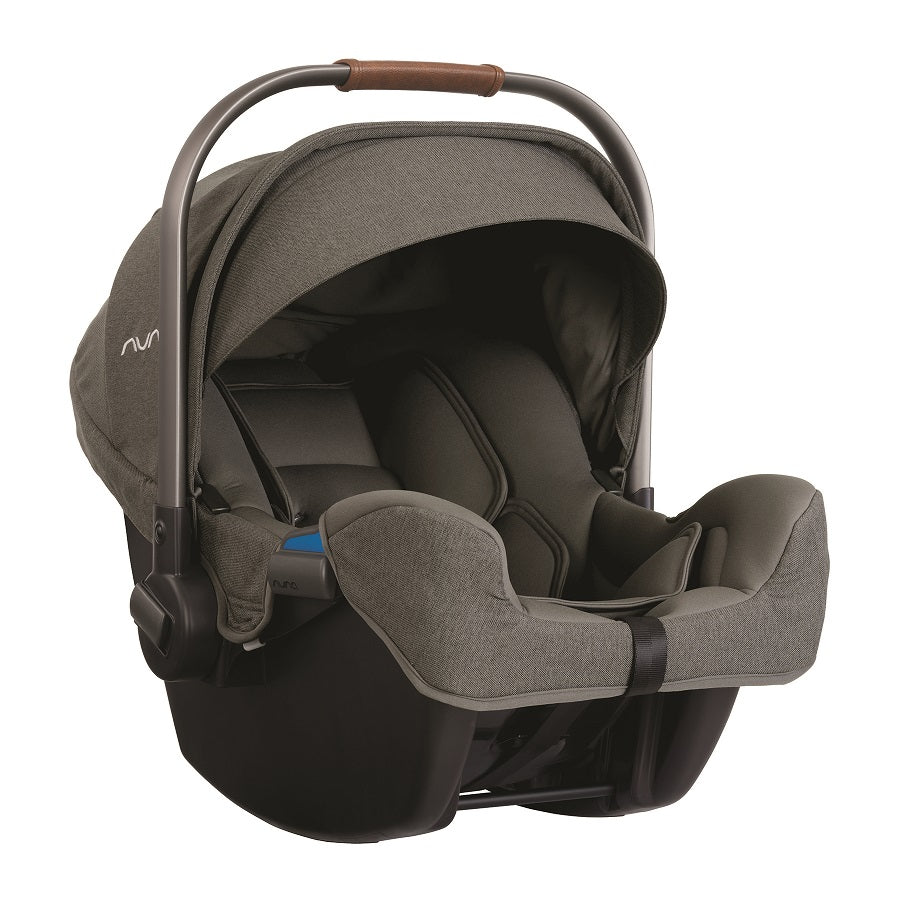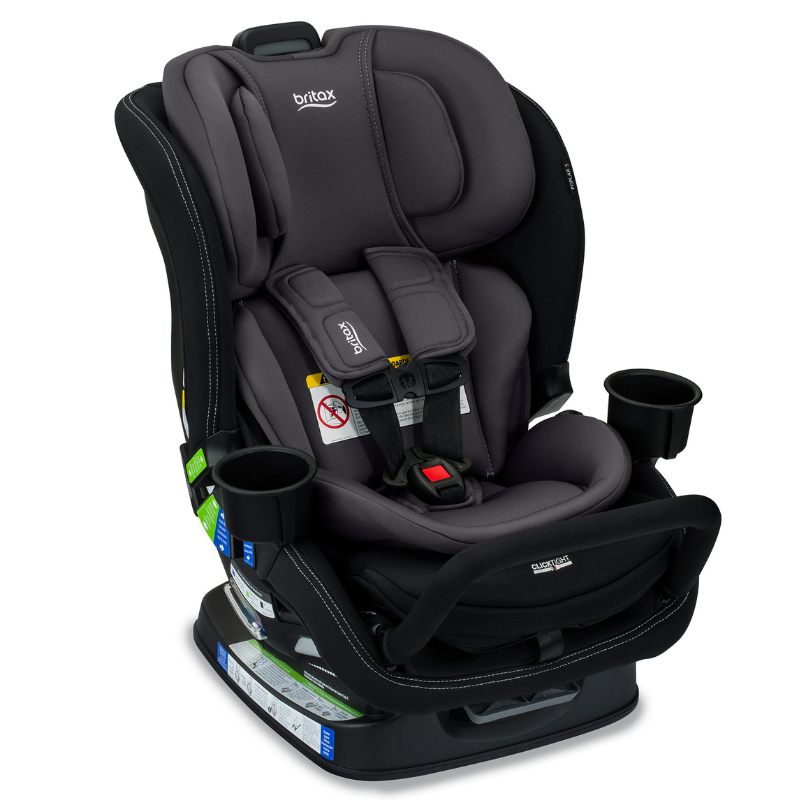The Ultimate Car Seat Guide: Choosing the Right Seat for Every Stage
Aller à la section

As new parents, ensuring your child's safety is at the forefront of every decision you make, and choosing the right car seat is no exception.
Each stage of your child's development calls for a specific type of car seat, and it’s essential to know when and how to make the right transitions.
We’ve put together this comprehensive guide to break down the key stages of car seat safety, helping you keep your little one safe on the road!

Rear Facing
Rear-facing car seats are the first type of seat your baby will use. This is the safest position for infants and toddlers because it helps distribute crash forces more evenly — protecting them on every ride!
There are two main categories of rear-facing seats: infant car seats and convertible car seats.
Infant Car Seats
Infant car seats are typically the first car seat most parents use. They’re specifically designed to keep newborns and smaller infants safe during car rides.
Most infant car seats can accommodate babies from birth, with starting weight limits around 4 pounds. While maximum weight or height limits differ, infant seats tend to have a maximum capacity of around 35 pounds or 32 inches or less. Lightweight infant car seat models tend to have a lower weight capacity (some as little as 22 lbs), so be sure to check the model specs when shopping.
Infant car seats are installed rear-facing, which is critical for your baby's safety, especially in the event of a collision. The rear-facing position cradles your baby’s head, neck, and spine, minimizing the risk of injury.
With the exception of a handful of models (like the Nuna PIPA Urbn), most infant car seats include a base that remains installed in your vehicle, while the car seat itself can be removed, allowing for easy transport of your baby. This is particularly convenient if you frequently move your child between the car and a stroller (aka travel system). Many infant seats can also be installed without the base using only a seatbelt, making them ideal for parents who use taxis or travel often.
When selecting an infant seat, look for features that make it more suitable for newborns.
For example, many models come with infant inserts that provide extra support for tiny babies, and you can remove these inserts as your baby grows. A five-point harness system ensures the crash forces are spread across the strongest parts of your baby’s body — the shoulders, chest, and hips. Additionally, adjustable recline positions help you maintain an optimal 45-degree angle, which is essential for supporting your newborn's head and neck.
Other features to consider include load legs and anti-rebound bars, which enhance the seat's safety by reducing movement in the event of an impact.
For more information on choosing the right infant car seat, check out The Ultimate Infant Car Seat Buying Guide and our Top Infant Car Seats articles in our Learning Centre.
Convertible Car Seats
Once your child is close to outgrowing their infant car seat (usually around the one-year mark or once they reach the maximum weight or height limit) it’s time to transition to a convertible car seat. These seats are called "convertible" because they can be used in two different modes: rear-facing and forward-facing.
Convertible car seats allow you to keep your child in the rear-facing position longer, which, as mentioned earlier, is the safest option. Most convertible seats can accommodate children up to 40 or 50 pounds in rear-facing mode. While many models say it’s safe to switch to forward-facing mode earlier, we recommend waiting until your child maxes out the rear-facing height or weight limit first.
Unlike infant car seats, convertible seats stay installed in your vehicle and are not compatible with travel systems. However, they offer a wider range of use. They also include many of the same safety features found in infant seats, such as five-point harnesses, recline positions, and removable infant inserts, but they often come with additional features, like cup holders and adjustable headrests, to accommodate growing toddlers.
For more details on when to transition and how to choose a convertible car seat, check out these articles:
Transitioning from Your Infant Seat
The Ultimate Convertible Car Seat Buying Guide
Top Convertible Car Seats of the Year.
Forward-Facing
Once your child has outgrown the rear-facing limits of their convertible seat, it’s time to move to a forward-facing position. This shift usually occurs around the age of 2 to 4 years, depending on your child's size and your seat model.
In forward-facing mode, convertible car seats can typically accommodate children up to 65 pounds. Features like adjustable headrests and reclining positions allow the seat to grow with your child.
Booster Seats
Booster seats are the next step in your child’s car seat journey.
Most booster seats ditch the 5-point harness and are designed to lift your child up so the car's seat belt fits them properly. For that reason, we recommend kids stay in their forward-facing convertible seat secured with a five-point harness until they max out the seat’s weight/height limit (usually around 65 lbs or 49”).
However, there are a few harnessed-booster seat options that bridge that gap, like the Nuna ROYL and Britax Grow With You ClickTight Harness2, which still use harness systems for added safety.
In general, there are two main types of booster seats: high-back boosters and backless boosters.
High-back boosters are ideal for younger children transitioning from a forward-facing seat, as they offer additional head and neck support. Backless boosters are suitable for older children who no longer need that support. Check out our Are High-Back Booster Seats Safer? article for more information.
Of note, according to Ontario law, children must remain in a booster seat until they are 8 years old, weigh more than 80 pounds, or are 4 feet 9 inches tall — whichever comes first. However, just because your child turns 8 doesn’t mean they’re ready to sit without a booster. The law also requires that the seat belt fits properly, which is often not the case for children until they are taller.
For more details on boosters, check out Is My Child Ready for a Booster Seat? and Top Booster Seats of the Year.
Bonus: All-in-One Car Seats
If you’re looking for a seat that can grow with your child from infancy to the booster stage, consider an all-in-one car seat. These seats can be used rear-facing, forward-facing, and as a booster, making them a long-term investment. All-in-one seats are ideal for families looking for convenience and a cost-effective solution, as you won't need to purchase multiple seats as your child grows.
While these seats offer excellent value, they do come with trade-offs.
For example, all-in-one seats aren’t compatible with travel systems, and they can be bulkier than infant car seats, making them harder to carry.
When choosing an all-in-one seat, consider factors like how often you'll need to move the seat between vehicles, your budget, and the seat’s ease of installation. Safety features such as side impact protection and easy-adjust harness systems are also important to ensure the seat keeps up with your growing child.
For more information on all-in-ones, check out Should I Get an Infant Seat or an All-in-One Convertible Seat? and Top All-in-One Convertible Car Seats of the Year.
Safe Journeys Ahead
Selecting the right car seat for each stage of your child’s development is essential for their safety. From rear-facing infant seats to convertible and booster seats, each offers unique benefits designed to protect your little one at every age and size. By understanding the features and safety recommendations for each type of car seat, you can ensure your child’s safety while making family travels as smooth as possible!
Of note, if you're unfamiliar with some of the terms mentioned, be sure to check out our article, Car Seat Terms Explained, for further clarification of baby seat lingo!
















